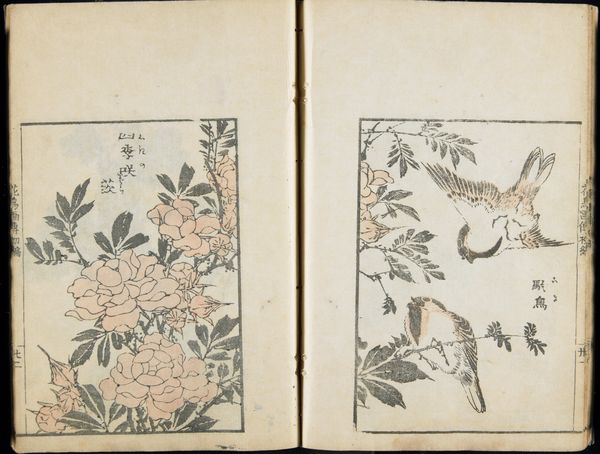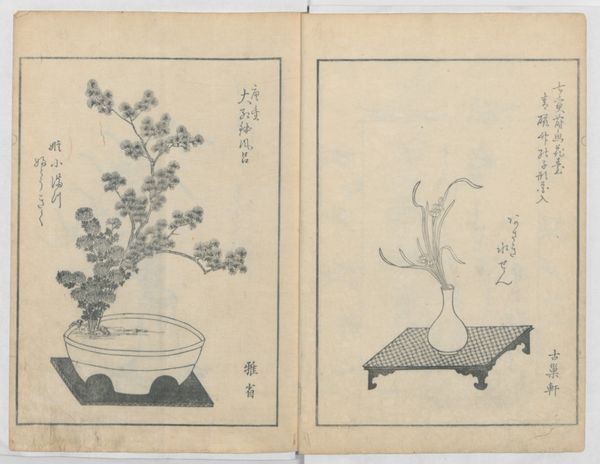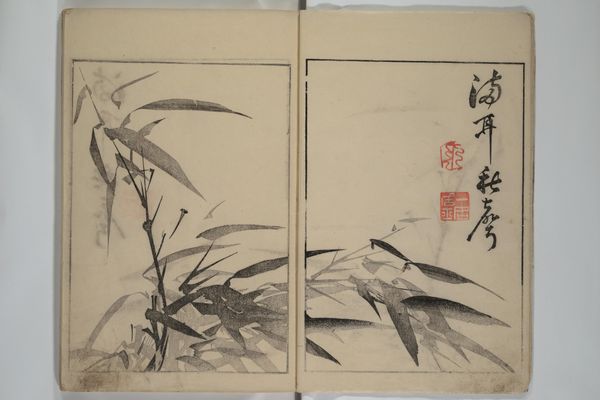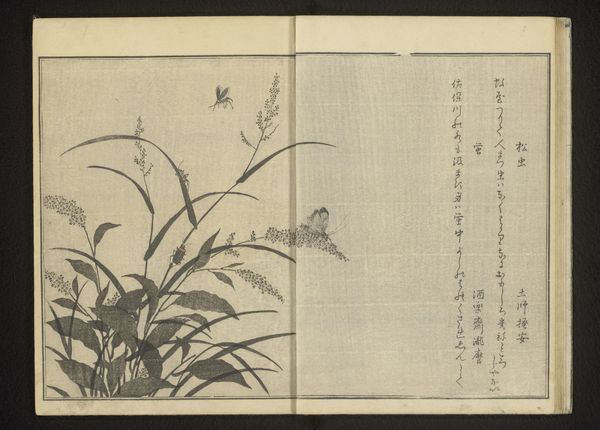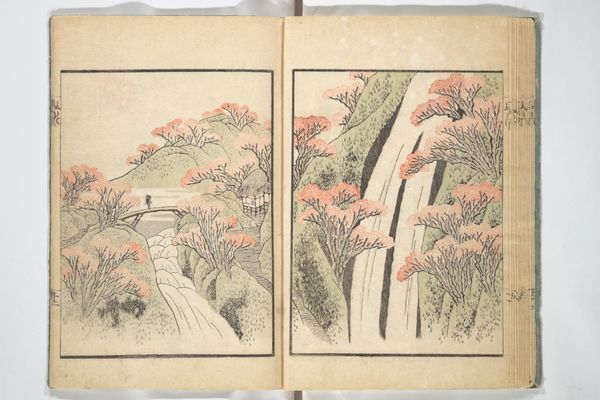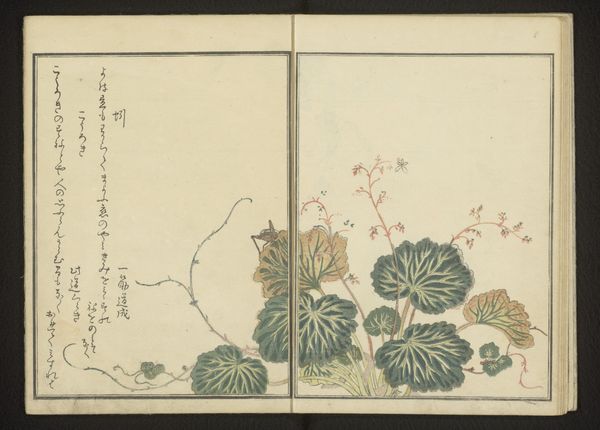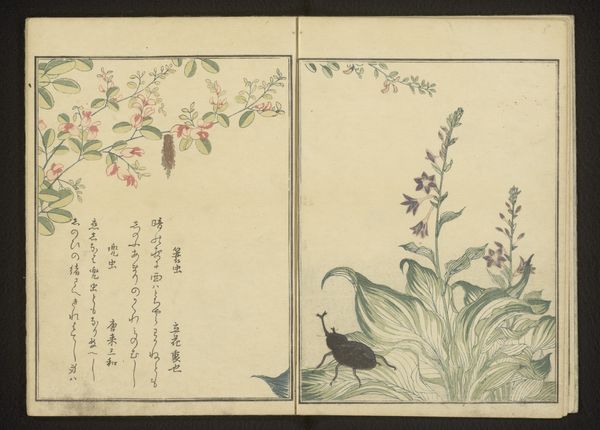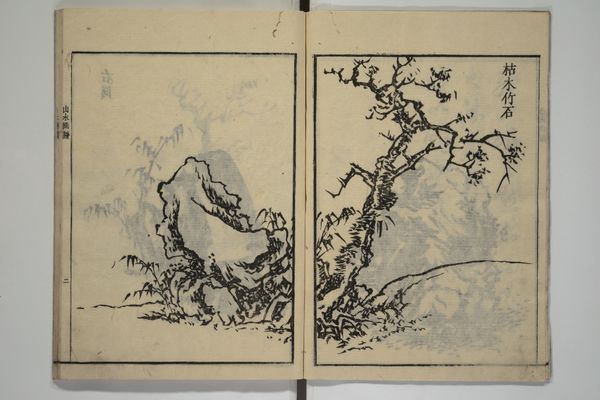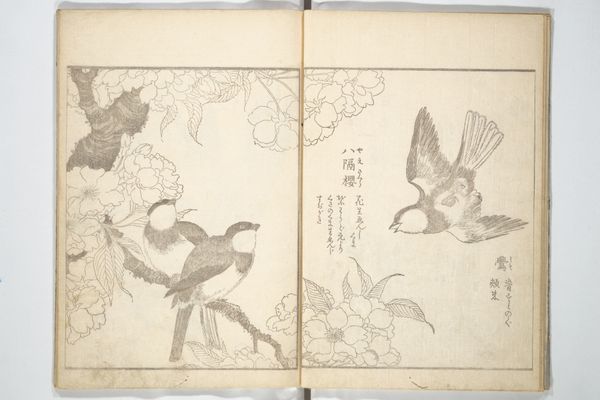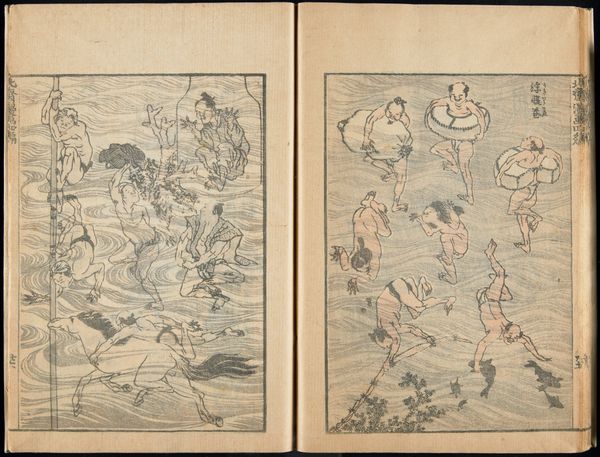
drawing, ink
#
drawing
#
asian-art
#
landscape
#
ink
Dimensions: each: 11 × 7 1/2 in. (28 × 19 cm)
Copyright: Public Domain
Editor: This artwork, "Pictures by Famous Artists," by Yosa Buson, dates back to 1814. It's rendered in ink, and classified as a drawing. It presents as an open book showcasing distinct scenes, almost like a diptych. On the left, we see detailed flora; and to the right, an open space. What strikes me is the juxtaposition—a sense of intimacy and wildness. How do you interpret this work, seeing it as a formalist? Curator: Formally, it is quite fascinating. Observe the contrasting compositions. The left page is dense, tightly packed with floral elements utilizing darker ink wash. Note the shapes and how they build upon one another to produce a satisfying formal symmetry that fills up much of the upper-left quadrant of the frame. How would you describe the arrangement of space on the right page by comparison? Editor: The right page feels markedly different, more open. The drawing exhibits less density, depicting trees rendered with fluid strokes. Their looping boughs frame open sky and water. It seems less about filling space, more about delineating shapes to allow negative space to play a critical role in completing each gesture. The movement in the branches is striking! Curator: Precisely. The structural contrast between the dense, grounded flora and the sparser, airy landscape establishes a dialogue of form. Consider the function of the heavy lines defining each page’s borders in relation to the lighter linework within them. Does it establish the picture plane or provide structural boundaries for the interior forms to disrupt? What affect is produced as a result of these material arrangements? Editor: It adds to the composition to create emphasis in a visual push-and-pull dynamic. The linework makes the shapes advance, the borders cause the compositions to recede slightly, enhancing the dimensional aspect, don’t you think? I can see it almost jumping off the page at me. I hadn't considered how much the composition played off of itself. Thanks for pointing this out. Curator: Indeed. The power of formal analysis reveals the artist’s thoughtful manipulation of space and form. Through subtle details, Buson evokes visual intrigue within the work’s self-contained structure, no external context needed.
Comments
No comments
Be the first to comment and join the conversation on the ultimate creative platform.

